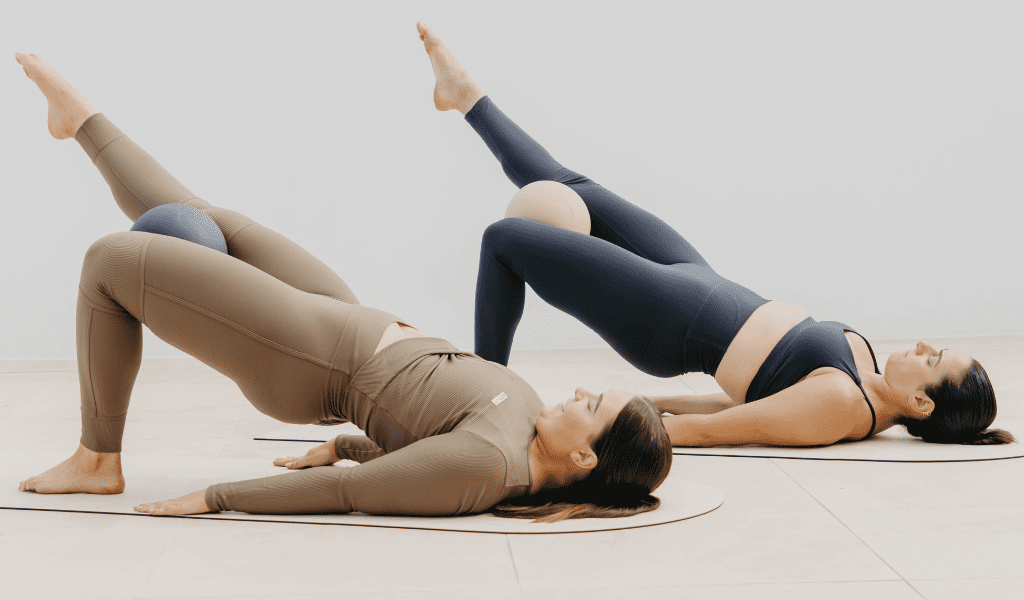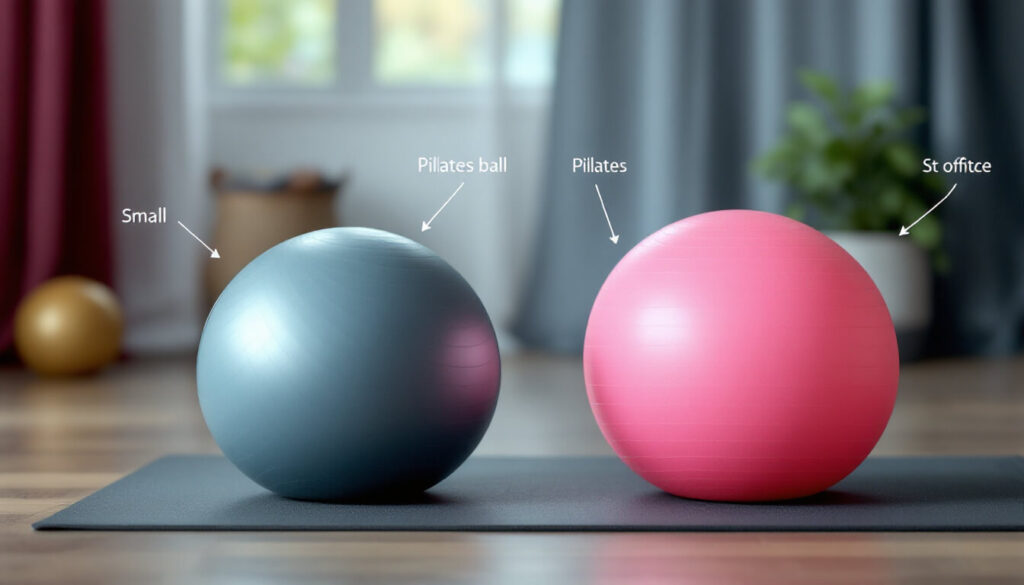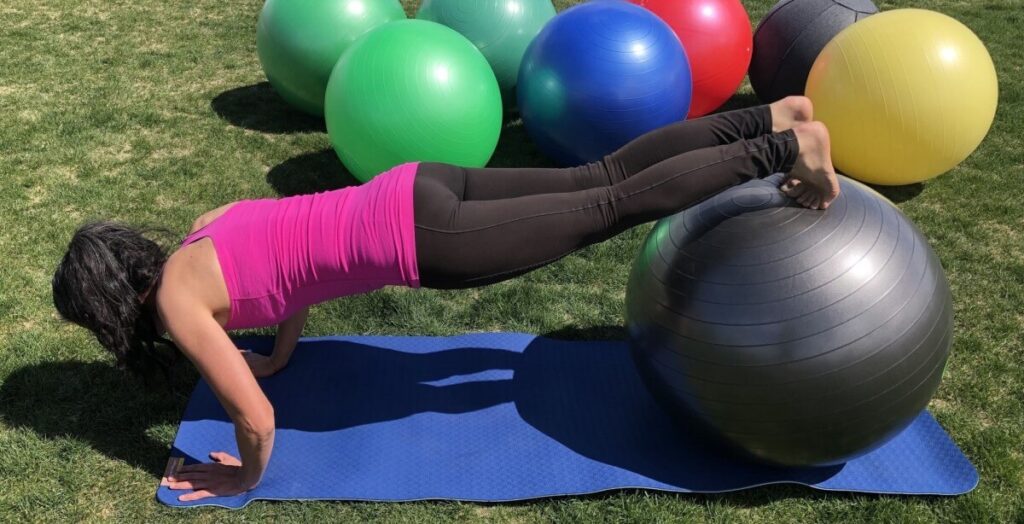Small Pilates Ball vs. Pilates Soft Ball: Which One Should You Choose?
Pilates has gained immense popularity over the years, attracting fitness enthusiasts who appreciate its low-impact yet effective workout regime. As you delve into the world of Pilates, you might come across various tools designed to enhance your practice, among which the small Pilates ball and the Pilates soft ball stand out. But how do you choose between them? This article will guide you through their characteristics and help you make an informed decision!
Understanding the Basics of Pilates Balls
To effectively choose between a small Pilates ball and a Pilates soft ball, it’s essential to understand what each of them is and how they function. Both tools aid in different exercises, offering unique benefits based on their design and material.
What is a Small Pilates Ball?
A small Pilates ball typically measures around 9 to 12 inches in diameter and is often filled with air. These balls are firm and provide stability, making them ideal for a variety of exercises that target core strength, balance, and flexibility.
The design of the small Pilates ball encourages proper body alignment and adds an element of instability to your workouts, challenging your muscles even further. They can be used during various Pilates routines, including traditional mat work and specific strength training routines. Incorporating a small Pilates ball into your regimen can also help enhance proprioception, which is your body’s ability to sense its position and movement in space. This heightened awareness can lead to improved coordination and agility, essential components for both athletic performance and everyday activities.

What is a Pilates Soft Ball?
On the other hand, a Pilates soft ball is generally larger, around 12 to 15 inches in diameter, and is designed to be much softer, often filled with air or a light foam. This versatility makes the Pilates soft ball suitable for gentle exercises and rehabilitation. It offers a cushion-like feel, which helps provide comfort during movements.
These balls are particularly useful for beginners or those recovering from injuries, as they can be used to perform low-impact exercises and enhance stability during workouts. Additionally, their soft texture allows for a more forgiving experience compared to firmer options. The Pilates soft ball can also be utilized in a variety of ways, such as for support during stretches or as a prop to assist in achieving deeper muscle engagement. By incorporating the soft ball into your routine, you can explore a range of movements that promote relaxation and mindfulness, making it an excellent tool for enhancing both physical and mental well-being.
See Also: The Benefits of Using a Pilates Wunda Chair for Strength and Flexibility
Key Differences Between Small Pilates Ball and Pilates Soft Ball
Understanding the differences between these two types of Pilates balls will shed light on which might be more suitable for your fitness journey. Each ball serves distinct purposes and can be incorporated into your routines based on your individual needs.
Size and Material Comparison
The clear difference begins with size and material. The small Pilates ball is firmer and more compact, making it great for balancing exercises that require stability. It has a higher bounce compared to the soft ball, which is advantageous for adding intensity to your workouts.
In contrast, the Pilates soft ball is larger and made from softer materials, providing a more comfortable feel. It is more versatile in terms of being able to support various exercises, especially those aimed at enhancing mobility and flexibility without the risk of strain. The soft ball’s design often includes a textured surface that helps with grip, making it easier to hold during dynamic movements. This feature can be particularly beneficial for individuals who may struggle with grip strength or coordination, allowing them to focus more on their form and technique.

Functionality and Versatility
Functionality is another essential aspect to consider. The small Pilates ball is excellent for isolating muscle groups during workouts and is often used in tandem with traditional Pilates exercises to target abs, legs, and other core groups effectively. Its compact size allows it to fit snugly between the lower back and the floor during exercises like the bridge, providing additional support and enhancing the effectiveness of the workout.
On the flip side, the Pilates soft ball can be used in a wider range of exercises. It is particularly effective for working on flexibility and gentle stretches thanks to its soft nature, allowing users to perform movements that involve more range of motion. This versatility makes it a good choice for all levels of fitness, particularly for beginners. Additionally, the soft ball can be used for rehabilitation purposes, helping individuals recover from injuries by providing gentle resistance and support during their recovery exercises. Its ability to adapt to various fitness levels and goals makes it a staple in many Pilates studios and home workout routines alike.
Benefits of Using a Small Pilates Ball
Integrating the small Pilates ball into your routine provides several benefits that can enhance your overall workout experience. Here’s a deeper look at its advantages.
Enhancing Workout Intensity
The small Pilates ball can significantly increase the intensity of your routines. When placed under the back or legs, it can amplify the engagement of core muscles, leading to more effective workouts. This added challenge forces your body to stabilize itself, improving strength and endurance over time.
Moreover, it allows you to perform more advanced movements, pushing your limits and helping you achieve your fitness goals faster. If you seek a more challenging Pilates experience, the small Pilates ball is definitely the way to go!
Improving Balance and Stability
Another remarkable benefit is its capability to improve balance and stability. When performing exercises that require you to balance on the small ball, you engage multiple muscle groups, particularly in the core area. This engagement not only helps strengthen your muscles but also enhances your overall body coordination.
As you progress, you’ll find that your ability to maintain balance and posture during standard exercises improves, benefitting your overall fitness regimen. A strong core is essential for a variety of physical activities, and the small Pilates ball helps you build it effectively.
Boosting Flexibility
In addition to enhancing intensity and stability, the small Pilates ball can also play a significant role in improving flexibility. By incorporating the ball into stretches, you can achieve a deeper range of motion. For instance, using the ball to support your back during a seated forward bend can help you reach further and hold the stretch longer, promoting greater flexibility in your hamstrings and lower back.
Furthermore, the instability of the ball encourages your body to engage stabilizing muscles while stretching, which can lead to a more comprehensive and effective flexibility routine. Over time, this can contribute to a more agile and resilient body, reducing the risk of injury in both daily activities and more intense workouts.

Enhancing Mind-Body Connection
Lastly, the small Pilates ball can enhance your mind-body connection, a crucial aspect of Pilates practice. As you focus on your movements and the way your body interacts with the ball, you cultivate a heightened awareness of your physical alignment and muscle engagement. This mindfulness can lead to better form and technique, ensuring that you reap the maximum benefits from each exercise.
Additionally, this increased awareness can translate into other areas of your life, helping you develop a more profound understanding of your body’s capabilities and limitations. As you become more in tune with your movements, you may find that your overall performance in various physical activities improves, fostering a sense of confidence and empowerment in your fitness journey.
Advantages of a Pilates Soft Ball
Though the small Pilates ball has its advantages, the Pilates soft ball also features unique benefits worth considering for your practice.
Gentle on the Body
First and foremost, the Pilates soft ball excels at being gentle on the body. Its softer texture makes it comfortable to use, even for those who may struggle with discomfort from hard surfaces. This allows users to focus on their movements without worrying about added strain.
This makes it a fantastic option for individuals recovering from injuries, allowing for a supportive approach to rebuilding strength and flexibility without risking further injury.
Ideal for Rehabilitation Exercises
Additionally, the Pilates soft ball is perfect for rehabilitation exercises. Physical therapists often recommend it due to its versatility and adaptability for balancing, gentle stretching, and strengthening exercises.
Its size and softness make it ideal for usage in various settings, whether at home or in a clinical environment, making it a valuable tool for individuals looking to recover or maintain their fitness levels.
Factors to Consider When Choosing Between the Two
Choosing the right Pilates ball ultimately depends on several factors aligned with your personal fitness journey. Here are some key considerations to aid your decision-making process.
Your Fitness Level and Goals
Your current fitness level and personal goals play a crucial role in determining the suitable ball for you. If you are a beginner or returning to fitness after an injury, starting with a Pilates soft ball can provide the necessary support while you build strength.
Conversely, if you have experience and are looking to challenge your limits, the small Pilates ball could be the better fit to enhance your workout intensity and help sculpt your body.
Comfort and Ease of Use
Finally, consider the comfort and ease of use. Experimenting with both options can help you find out which ball suits your body best. Some individuals may prefer the softness of a Pilates soft ball, while others might like the firmer challenge provided by the small Pilates ball.
Listen to your body’s feedback during workouts and select the option that feels right for your exercises and overall enjoyment.
In conclusion, both the small Pilates ball and the Pilates soft ball offer unique benefits that can enhance your Pilates practice. By considering your individual fitness level, personal goals, and preferences, you’ll be well-equipped to choose the right ball for your workouts. Happy exercising!

